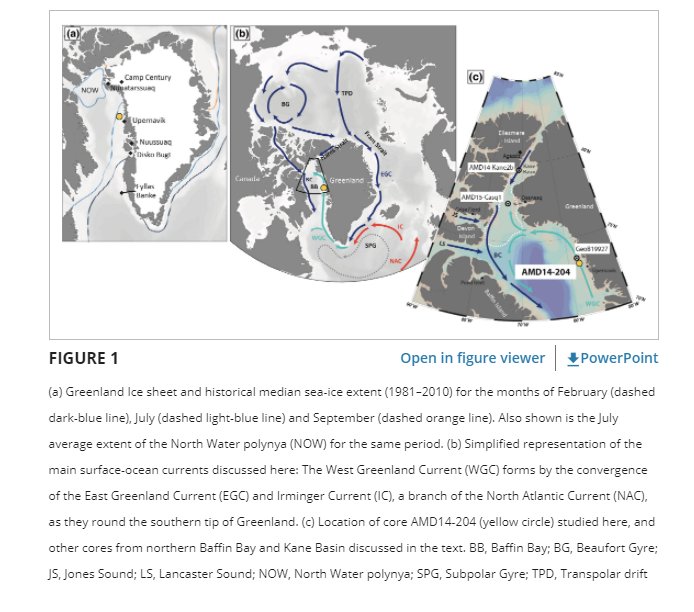Learning from the past: impact of the Arctic Oscillation on sea ice and marine productivity off northwest Greenland over the last 9000 years
New publication by Audrey Limoges, Kaarina Weckström, Sofia Ribeiro, Eleanor Georgiadis, Katrine E. Hansen, Philippe Martinez, Marit‐Solveig Seidenkrantz, Jacques Giraudeau, Xavier Crosta, Guillaume Massé

Abstract:
Climate warming is rapidly reshaping the Arctic cryosphere and ocean conditions, with consequences for sea ice and pelagic productivity patterns affecting the entire marine food web. To predict how ongoing changes will impact Arctic marine ecosystems, concerted effort from various disciplines is required. Here, we contribute multi‐decadal reconstructions of changes in diatom production and sea‐ice conditions in relation to Holocene climate and ocean conditions off northwest Greenland. Our multiproxy study includes diatoms, sea‐ice biomarkers (IP25 and HBI III) and geochemical tracers (TOC [total organic carbon], TOC:TN [total nitrogen], δ13C, δ15N) from a sediment core record spanning the last c. 9,000 years. Our results suggest that the balance between the outflow of polar water from the Arctic, and input of Atlantic water from the Irminger Current into the West Greenland Current is a key factor in controlling sea‐ice conditions, and both diatom phenology and production in northeastern Baffin Bay. Our proxy record notably shows that changes in sea‐surface conditions initially forced by Neoglacial cooling were dynamically amplified by the shift in the dominant phase of the Arctic Oscillation (AO) mode that occurred at c. 3,000 yr BP, and caused drastic changes in community composition and a decline in diatom production at the study site. In the future, with projected dominant‐positive AO conditions favored by Arctic warming, increased water column stratification may counteract the positive effect of a longer open‐water growth season and negatively impact diatom production.
